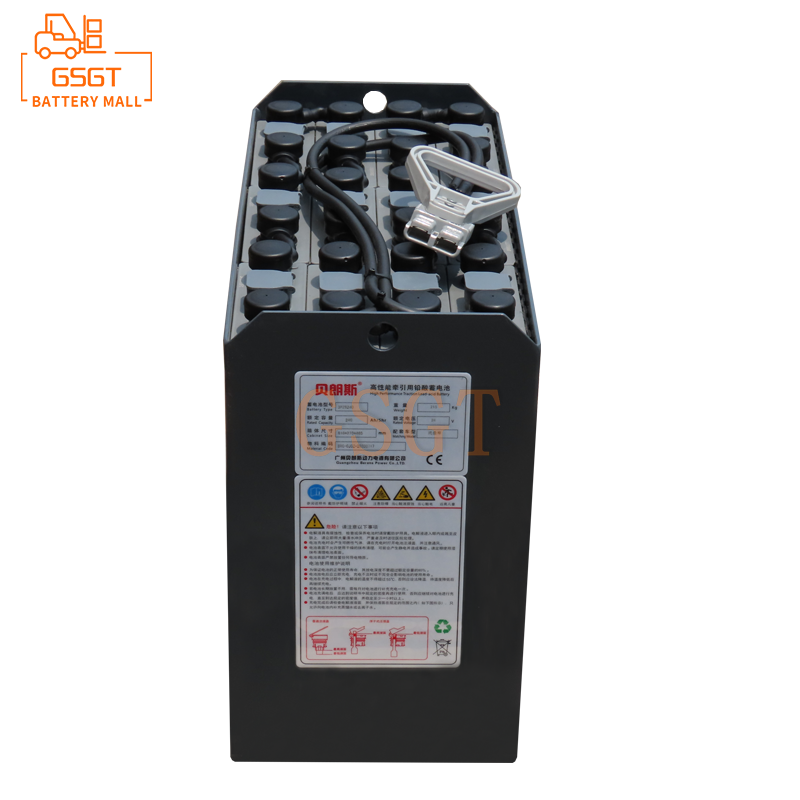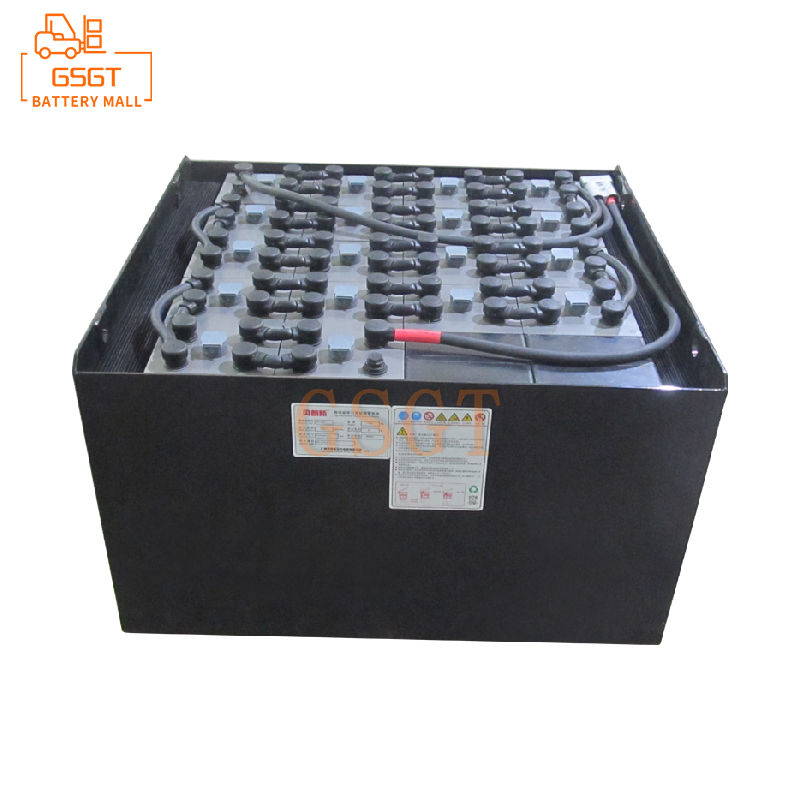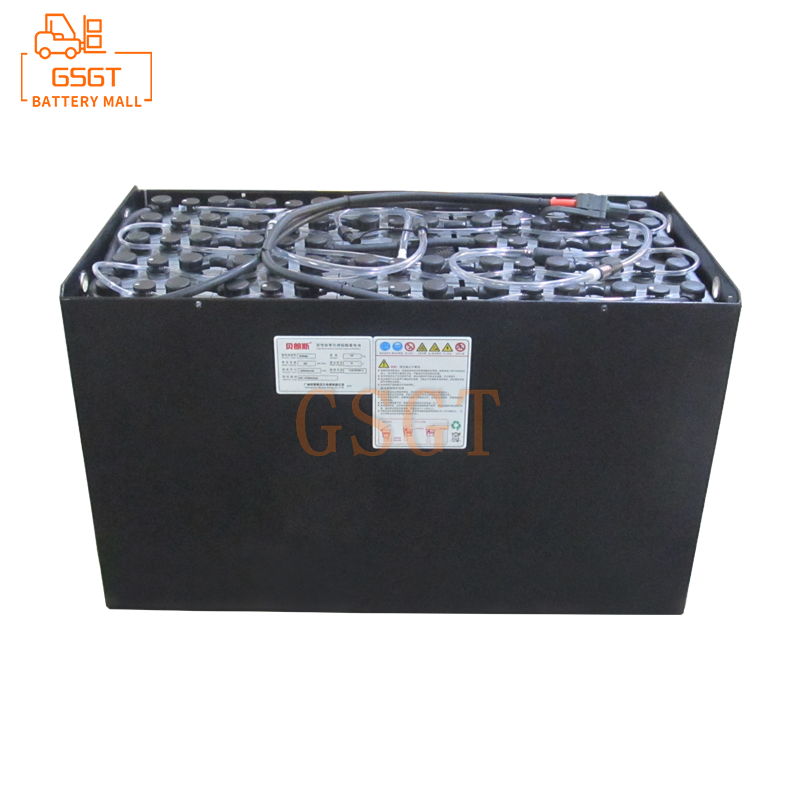Time:2025-05-24 16:49:19
Browse:587
In the modern logistics and warehousing industry, electric forklifts, with their environmentally friendly and efficient features, have become the core equipment for goods handling and stacking operations. However, during the long-term use of forklift batteries, due to various factors such as excessive discharge, improper charging, and electrolyte deficiency, they are prone to battery depletion, which can prevent the forklift from starting normally, seriously affecting operational efficiency and even potentially delaying important logistics and transportation tasks. Because of
Therefore, it is of vital importance to master a scientific and efficient emergency response plan for the activation of forklift batteries when they are discharged. This article will, based on professional tools, provide a detailed three-step emergency response plan for activating forklift batteries when they are depleted, offering practical references for logistics and warehousing enterprises as well as relevant operators.
1. Preparatory Work: Tools and Testing
(1) Selection and Preparation of Professional Tools - Battery Tester: The battery tester is a key tool for assessing the condition of forklift batteries. It can precisely measure parameters such as the voltage, internal resistance and capacity of the battery, helping operators quickly determine the degree of battery depletion and health status. For instance, high-precision digital battery detectors can display the individual voltage of each battery. By comparing the voltage values of each individual cell, it is possible to identify whether there is a problem of voltage imbalance in the battery pack. When choosing a battery detector, it is necessary to ensure that it has the characteristics of a wide measurement range, high precision and easy operation, so as to meet the detection requirements of forklift batteries of different models and specifications.
Charger: For forklift batteries that are undercharged, a suitable charger should be used for activation and charging. There are various types of chargers, including smart chargers and fast chargers, etc. The intelligent charger has the functions of automatically identifying the battery status, adjusting the charging current and voltage, which can effectively avoid problems such as overcharging and undercharging, and protect the battery life. When choosing a charger, it is necessary to match it according to the type of forklift battery (such as lead-acid battery, lithium battery), capacity and voltage specifications. For instance, lead-acid batteries typically require a charger with a three-stage charging mode, namely constant current charging, constant voltage charging and float charging stages, to ensure that the battery can be fully charged without being damaged.
Jumper cables: In cases where the battery is severely discharged and cannot be activated through regular charging, jumper cables can provide temporary starting power for the discharged battery by means of other normal power sources (such as the battery of another forklift or a backup power source). The jumper cables should have sufficient wire diameter and length to carry large current transmission. At the same time, it is necessary to ensure that the insulation performance of the cables is good to prevent short circuits and leakage accidents. Generally speaking, it is more appropriate to choose jumper cables with a diameter of 25 square millimeters or more and a length of no less than 3 meters.
Multimeter: A multimeter is a multifunctional measuring tool that can be used to detect parameters such as the on-off state, voltage, and current of a circuit. During the activation process of a forklift battery when it is undercharged, a multimeter can help detect whether there are any open circuits or short circuits in the battery connection lines, as well as whether the output voltage and current of the charger are normal. When using a multimeter, it is necessary to correctly select the range according to the measurement requirements to avoid measurement errors or damage to the instrument caused by improper range selection.
Safety protection equipment: When performing operations related to forklift batteries, it is essential to wear necessary safety protection equipment, such as insulating gloves, goggles, acid-resistant aprons, etc. The electrolyte in forklift batteries is usually sulfuric acid solution, which is highly corrosive. Once it splashes onto the skin or into the eyes, it can cause serious harm. Insulating gloves and acid-resistant aprons can effectively prevent operators from coming into contact with the electrolyte, while goggles can protect the eyes from splashing liquids. In addition, baking soda and other neutralizing agents should also be prepared at the operation site to facilitate timely neutralization treatment in case of electrolyte leakage.
(2) Battery status detection
Before using professional tools to activate a discharged battery, a comprehensive inspection of the battery's condition must be conducted to determine the cause of the discharge and the battery's repairability.
Voltage measurement: Use a battery tester or multimeter to measure the total voltage of the battery pack and the individual voltage of each battery. Under normal circumstances, the voltage of a single lead-acid battery should be around 2.1V to 2.2V. The total voltage of the battery pack is determined by the number of battery cells (for example, a 12V battery pack is composed of 6 individual cells connected in series). If the voltage of a single cell is lower than 1.75V, it indicates that the battery is severely undercharged. If the voltage difference of individual cells is significant (exceeding 0.1V), it indicates that there is a voltage imbalance problem in the battery pack, which may be due to internal short circuits or sulfation of the plates in some batteries.
Internal resistance detection: The internal resistance of a battery is one of the important indicators reflecting its performance. The internal resistance of the battery is measured by a battery tester. Excessive internal resistance indicates that the battery plates are aging, the concentration of the electrolyte has decreased, or there are other internal faults, which may affect the charging and discharging performance of the battery. Generally speaking, the internal resistance of a new battery is relatively small. As the usage time increases, the internal resistance will gradually increase. When the internal resistance of a battery exceeds the specified maximum value, its capacity and performance will significantly decline. At this point, it may be necessary to repair or replace the battery.
Visual inspection: Carefully examine the appearance of the battery to check if there is any damage, deformation, leakage or other conditions on the battery casing. If the battery casing is damaged, it will cause the electrolyte to leak, which not only pollutes the environment but also affects the normal use of the battery. The leakage phenomenon may be caused by poor battery sealing or excessive internal pressure, and it needs to be dealt with promptly. In addition, it is necessary to check whether the battery terminals are oxidized or loose. Oxidation of the terminals will increase the contact resistance, affect the current transmission, and lead to a decrease in charging and discharging efficiency. Loose terminals may cause poor circuit contact and even spark, posing a safety hazard.
2. Activation Operation: Implemented step by step
(1) The first step: Initial awakening
Connect the charger: After confirming that there is no obvious damage to the battery's appearance and the connection line is normal, correctly connect the output terminal of the smart charger to the positive and negative terminals of the undercharged battery. When connecting, strictly follow the sequence of "connect the negative terminal first, then the positive terminal" to avoid sparks caused by the instantaneous current generated during the connection process, which may lead to safety accidents. After the connection is completed, check if the connection is firm and ensure good contact between the charger and the battery.
Set charging parameters: According to the type and specification of the battery, set appropriate charging parameters on the charger. For lead-acid batteries, a constant current charging mode is usually adopted first. The charging current is generally set at 1/10 to 1/5 of the battery capacity (for example, for a 100Ah battery, the charging current can be set at 10A to 20A). After setting the charging parameters, start the charger and begin the initial wake-up charging of the undercharged battery.
Observe the charging status: During the charging process, closely monitor the display screen of the charger and the status of the battery. The charger should display normal charging current, voltage and charging time and other information. At the same time, pay attention to whether the battery has any abnormal phenomena such as overheating or gas emission. If the battery overheats severely (with a temperature exceeding 50℃) or emits a large amount of gas, charging should be stopped immediately. Check whether the charging parameters are set correctly and whether there are any internal short circuits or other issues with the battery. The initial wake-up charging time is generally 1 to 2 hours. When the battery voltage rises to a certain level (such as the voltage of a single cell reaching around 1.8V), the next operation can be carried out.
(2) Step Two: Deep Activation
Adjust the charging mode: After the initial wake-up charging, switch the charging mode of the charger to constant voltage charging mode. The constant voltage charging voltage is set according to the battery type and specification. For lead-acid batteries, the constant voltage charging voltage is generally set at 2.4V - 2.5V per cell. In constant voltage charging mode, the charging current gradually decreases as the battery capacity increases. When the charging current drops to a certain value (such as 1/50-1/100 of the battery capacity), it indicates that the battery is nearly fully charged.
Replenishing electrolyte (for lead-acid batteries) : During the deep activation process, if it is found that the electrolyte level of the battery is too low, an appropriate amount of distilled water or special lead-acid battery electrolyte needs to be replenished. When replenishing the electrolyte, use clean plastic or glass containers. Avoid using metal containers to prevent metal impurities from entering the battery and causing self-discharge. The electrolyte level should be added between the upper and lower limit scales marked on the battery casing. After replenishing the electrolyte, continue charging to ensure that the electrolyte is thoroughly and evenly mixed.
Cyclic charge and discharge (optional) : For batteries that are severely undercharged and have a significant performance decline, cyclic charge and discharge operations can be carried out to further activate the active substances on the battery plates and increase the battery capacity. The specific operation method is as follows: After fully charging the battery, use an appropriate load (such as a resistor) to discharge the battery. When the battery voltage drops to a certain extent (such as a single cell voltage of 1.7V), stop discharging and then charge again. Repeating this process for 2 to 3 cycles of charging and discharging can effectively improve the battery's performance. However, it should be noted that during the cycle of charging and discharging, the depth of discharge and the charging time must be strictly controlled to avoid damage to the battery caused by excessive discharge and overcharging.
(3) Step 3: Performance Recovery and Verification
Full charging: After deep activation, continue charging the battery until the charger indicates that the battery is fully charged (the charging current drops to the minimum value and remains stable, and the charger indicator light shows that it is fully charged). The entire charging process may take 6 to 8 hours or even longer, depending on the degree of battery depletion and capacity. After the charging is completed, do not immediately disconnect the charger from the battery. Let the battery remain in the float charging mode of the charger for a period of time (generally 1-2 hours) to ensure that the battery is fully charged.
Capacity test: Use a battery tester to conduct a capacity test on the charged battery to assess the performance recovery of the battery. Capacity testing methods typically include constant current discharge method and pulse discharge method, etc. Constant current discharge method involves discharging the battery at a constant current, recording the discharge time and voltage changes, and calculating the actual capacity of the battery based on the discharge current and time. The pulse discharge method involves conducting short-term high-current pulse discharges to measure the voltage drop of the battery during the pulse discharge process, thereby estimating the battery's capacity and internal resistance. Through capacity testing, if the battery capacity reaches over 80% of the rated capacity, it indicates that the battery performance has recovered well and can be used normally. If the capacity is low, further repair may be necessary or battery replacement may be considered.
Actual operation test: Install the restored battery onto the forklift and conduct an actual operation test. Start the forklift and observe whether its starting performance, traveling speed, lifting and tilting actions are normal. During operation, pay close attention to the voltage changes and temperature conditions of the battery. If the forklift can operate normally and the battery voltage fluctuates within a reasonable range (for example, during the discharge process of a lead-acid battery, the voltage of a single cell is not lower than 1.7V), and the temperature does not exceed 60℃, it indicates that the battery has been successfully activated when it is undercharged and can be put into normal use.
3. Precautions and Maintenance Suggestions
(1) Safety Precautions
When performing the operation of activating the battery of a forklift when it is discharged, it is essential to strictly follow the safety operation procedures. Smoking, using open flames or equipment that generates sparks are strictly prohibited at the operation site to prevent the hydrogen gas produced inside the battery from exploding.
Avoid operating the battery in a damp environment to prevent electric shock accidents. Before operation, make sure your hands are dry and the insulation performance of tools and equipment is good.
When a battery leaks, it should be immediately neutralized with a neutralizing agent such as baking soda, and the leaked electrolyte should be cleaned up. During the handling process, protective equipment should be worn properly to prevent the electrolyte from coming into contact with the skin and eyes.
When connecting or disconnecting devices such as chargers and jumper cables, the power supply must be turned off first to prevent the generation of electric sparks and avoid safety accidents.
(2) Daily maintenance suggestions
Standard charging operation: Charge strictly in accordance with the user manual of the forklift battery to avoid over-discharge and overcharging. After each use, the battery should be charged in time. The charging time should not be too long or too short. For lead-acid batteries, it is recommended to charge them when the remaining power is 20% to 30%, and the charging time should be controlled at about 8 to 10 hours. Lithium batteries should be charged reasonably according to their characteristics.
Regular inspection and maintenance: Regularly check the electrolyte level of the battery, the connection status of the terminals, and the condition of the battery casing. For lead-acid batteries, check the electrolyte level every 1 to 2 months and replenish distilled water or special electrolyte in a timely manner. Check whether the terminal posts are oxidized or loose. If there are any problems, clean and tighten them in time. At the same time, regularly use a battery tester to test the performance of the battery, promptly identify any problems existing in the battery and handle them.
Correct usage and storage: During the operation of forklifts, avoid frequent sudden acceleration, sudden braking and long-term heavy-load work to reduce battery wear and tear. When the forklift is not in use for a long time, the battery should be fully charged and stored. It should be recharged at regular intervals (such as half a month) to prevent self-discharge of the battery and resulting in low power. In addition, the storage environment for batteries should be kept dry and well-ventilated, avoiding direct sunlight and high-temperature environments.
In conclusion, by rationally choosing and using professional tools, conducting standardized operations in accordance with the three-step method for activating forklift batteries when they are low on power, strictly adhering to safety precautions and doing a good job in daily maintenance, the problem of forklift battery low on power can be effectively solved, the battery's service life can be prolonged, the efficiency and reliability of forklifts can be improved, and a strong guarantee can be provided for the normal operation of the logistics and warehousing industry.

$850

$880

$4220

$3260

MESSAGE
Professional And Efficient
Security
Affordable Price
Professional Services